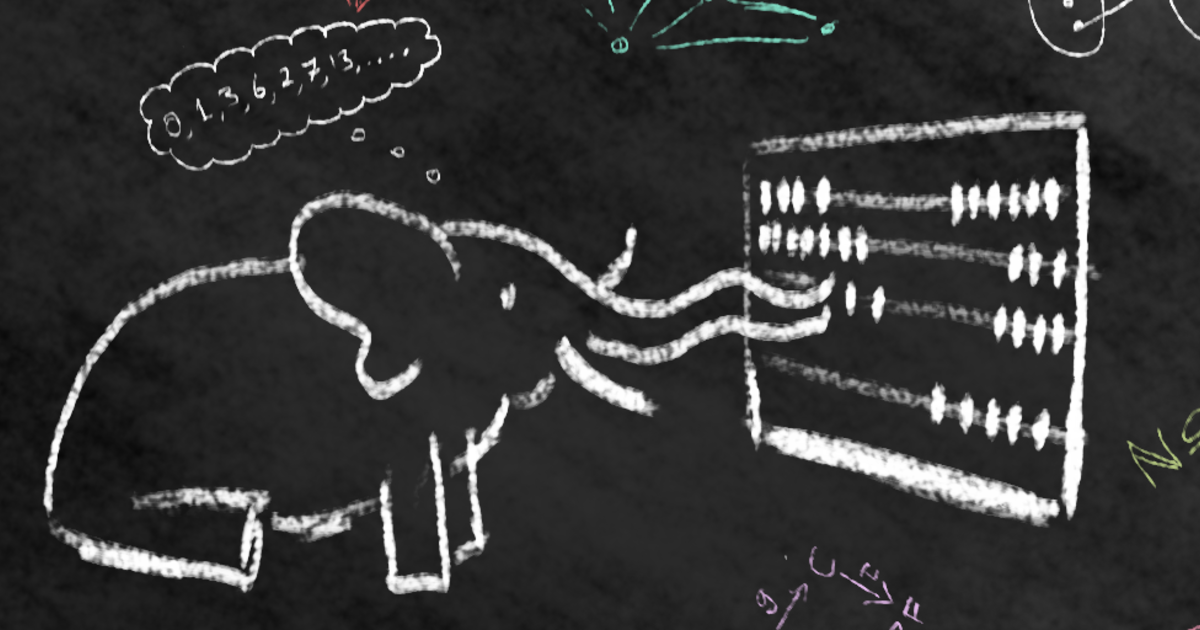Dimitris Nakos, MSc<p>I'm doing an essay on asynchronous Kauffman boolean networks (using N=9, K=3). I seem to not be able to locate any attractors, at least not anything that I can recognise (i.e. a specific set of states that when they appear the system will stay in these states or cycle through them). Also there is nothing consisten when starting from the same initial condition. Am I missing something here? </p><p>Thanks for the help in advance!!</p><p><a href="https://mathstodon.xyz/tags/networks" class="mention hashtag" rel="tag">#<span>networks</span></a> <a href="https://mathstodon.xyz/tags/BooleanNetworks" class="mention hashtag" rel="tag">#<span>BooleanNetworks</span></a> <a href="https://mathstodon.xyz/tags/asynchronousnetworks" class="mention hashtag" rel="tag">#<span>asynchronousnetworks</span></a> <a href="https://mathstodon.xyz/tags/attractors" class="mention hashtag" rel="tag">#<span>attractors</span></a></p>
Recent searches
No recent searches
Search options
Only available when logged in.
mathstodon.xyz is one of the many independent Mastodon servers you can use to participate in the fediverse.

A Mastodon instance for maths people. We have LaTeX rendering in the web interface!
Administered by:
Server stats:
2.8Kactive users
mathstodon.xyz: About · Status · Profiles directory · Privacy policy
Mastodon: About · Get the app · Keyboard shortcuts · View source code · v4.3.7
#BooleanNetworks
0 posts · 0 participants · 0 posts today
Loïc Paulevé<p>Proud of publishing my first <span class="h-card"><a href="https://ecoevo.social/@PeerCommunityJournal" class="u-url mention" rel="nofollow noopener noreferrer" target="_blank">@<span>PeerCommunityJournal</span></a></span> paper after recommendation from PCI MathCompBiol 😃</p><p>I present a logical modeling and resolution method for <a href="https://social.sciences.re/tags/reprogramming" class="mention hashtag" rel="nofollow noopener noreferrer" target="_blank">#<span>reprogramming</span></a> the fixed points and minimal trap spaces of <a href="https://social.sciences.re/tags/BooleanNetworks" class="mention hashtag" rel="nofollow noopener noreferrer" target="_blank">#<span>BooleanNetworks</span></a>, which accounts for the creation of new attractors:<br><a href="https://peercommunityjournal.org/articles/10.24072/pcjournal.255/" rel="nofollow noopener noreferrer" target="_blank"><span class="invisible">https://</span><span class="ellipsis">peercommunityjournal.org/artic</span><span class="invisible">les/10.24072/pcjournal.255/</span></a></p>
Luis M. Rocha<p>Super happy to have participated on this special issue on the principle of dynamical <a href="https://qoto.org/tags/criticality" class="mention hashtag" rel="nofollow noopener noreferrer" target="_blank">#<span>criticality</span></a>. It was really fun to expand our work on effective connectivity, <a href="https://qoto.org/tags/canalization" class="mention hashtag" rel="nofollow noopener noreferrer" target="_blank">#<span>canalization</span></a> and <a href="https://qoto.org/tags/redundancy" class="mention hashtag" rel="nofollow noopener noreferrer" target="_blank">#<span>redundancy</span></a> with Jordan Rozum, Felipe Costa, and Austin Marcus. An a bonus for publishing in <a href="https://qoto.org/tags/Entropy" class="mention hashtag" rel="nofollow noopener noreferrer" target="_blank">#<span>Entropy</span></a>---makes me feel quite cybernetic! <a href="https://qoto.org/tags/complexsystems" class="mention hashtag" rel="nofollow noopener noreferrer" target="_blank">#<span>complexsystems</span></a> <a href="https://qoto.org/tags/BooleanNetworks" class="mention hashtag" rel="nofollow noopener noreferrer" target="_blank">#<span>BooleanNetworks</span></a> <a href="https://qoto.org/tags/Dynamics" class="mention hashtag" rel="nofollow noopener noreferrer" target="_blank">#<span>Dynamics</span></a> <a href="https://qoto.org/tags/networkScience" class="mention hashtag" rel="nofollow noopener noreferrer" target="_blank">#<span>networkScience</span></a> <a href="https://qoto.org/tags/ComputationalBiology" class="mention hashtag" rel="nofollow noopener noreferrer" target="_blank">#<span>ComputationalBiology</span></a> <br><a href="https://www.mdpi.com/1099-4300/25/2/374" rel="nofollow noopener noreferrer" target="_blank"><span class="invisible">https://www.</span><span class="">mdpi.com/1099-4300/25/2/374</span><span class="invisible"></span></a></p>
Luis M. Rocha<p>Very cool approach to the <a href="https://qoto.org/tags/control" class="mention hashtag" rel="nofollow noopener noreferrer" target="_blank">#<span>control</span></a> of <a href="https://qoto.org/tags/BooleanNetworks" class="mention hashtag" rel="nofollow noopener noreferrer" target="_blank">#<span>BooleanNetworks</span></a> and biochemical regulation models, using <a href="https://qoto.org/tags/nonlinear" class="mention hashtag" rel="nofollow noopener noreferrer" target="_blank">#<span>nonlinear</span></a> <a href="https://qoto.org/tags/dynamics" class="mention hashtag" rel="nofollow noopener noreferrer" target="_blank">#<span>dynamics</span></a> and <a href="https://qoto.org/tags/canalization" class="mention hashtag" rel="nofollow noopener noreferrer" target="_blank">#<span>canalization</span></a>, by Kwang-Hyun Cho's team at KAIST<br> <br><a href="https://qoto.org/tags/SystemsBiology" class="mention hashtag" rel="nofollow noopener noreferrer" target="_blank">#<span>SystemsBiology</span></a> <a href="https://qoto.org/tags/NetworkScience" class="mention hashtag" rel="nofollow noopener noreferrer" target="_blank">#<span>NetworkScience</span></a> <a href="https://qoto.org/tags/NetworkMedicine" class="mention hashtag" rel="nofollow noopener noreferrer" target="_blank">#<span>NetworkMedicine</span></a></p><p><a href="https://doi.org/10.1093/bioinformatics/btad045" rel="nofollow noopener noreferrer" target="_blank"><span class="invisible">https://</span><span class="ellipsis">doi.org/10.1093/bioinformatics</span><span class="invisible">/btad045</span></a></p>
Loïc Paulevé<p><a href="https://social.sciences.re/tags/Introduction" class="mention hashtag" rel="nofollow noopener noreferrer" target="_blank">#<span>Introduction</span></a> Hey 🐘, I'm Loïc, a French researcher at LaBRI, computer science lab of the University of Bordeaux. </p><p>My research is at the intersection of <a href="https://social.sciences.re/tags/FormalMethods" class="mention hashtag" rel="nofollow noopener noreferrer" target="_blank">#<span>FormalMethods</span></a> and <a href="https://social.sciences.re/tags/SystemsBiology" class="mention hashtag" rel="nofollow noopener noreferrer" target="_blank">#<span>SystemsBiology</span></a>, where we struggle to formalize biological questions and data.<br>I'm working on <a href="https://social.sciences.re/tags/BooleanNetworks" class="mention hashtag" rel="nofollow noopener noreferrer" target="_blank">#<span>BooleanNetworks</span></a>, how they are adequate to abstract quantitative systems, how to infer them, how to verify and control them. This also involves some software development, and very importantly, exciting <a href="https://social.sciences.re/tags/interdisciplinary" class="mention hashtag" rel="nofollow noopener noreferrer" target="_blank">#<span>interdisciplinary</span></a> challenges!</p>
SearchLive feeds
Mastodon is the best way to keep up with what's happening.
Follow anyone across the fediverse and see it all in chronological order. No algorithms, ads, or clickbait in sight.
Create accountLoginDrag & drop to upload
